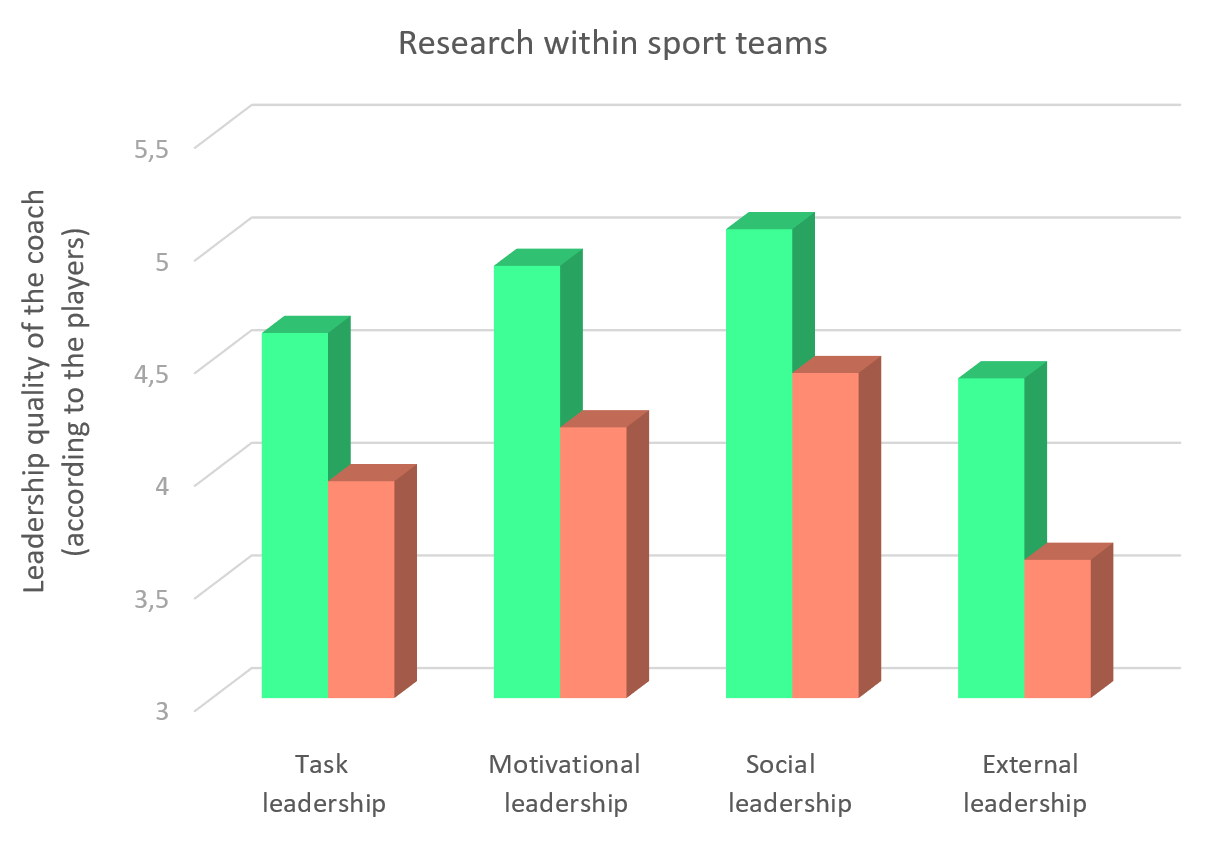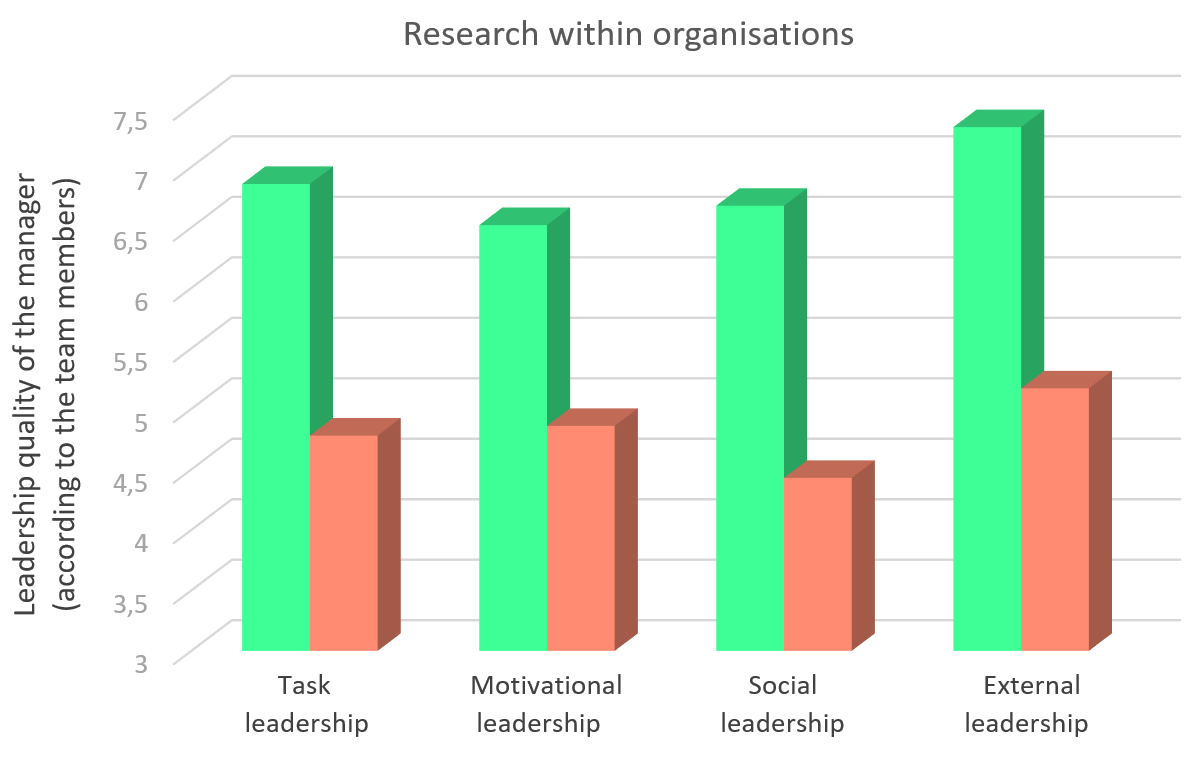Your role as coach or manager
Leaders become great not because of their power but because of their ability to empower others.
John C. Maxwell, bestselling author & speaker on organisational leadership
Shared leadership does not involve that the formal leader becomes redundant. In contrast, both the formal leader and the leaders within the team are essential here and complement each other. The manager or coach are the key drivers to implement a structure of shared leadership in the first place and fulfil an important task in supporting and guiding the appointed leaders within the team.
Did you know that research has shown that leaders who opt for shared leadership are perceived by their team members as better leaders than leaders directing from a hierarchical position? It should therefore come as no surprise that more and more teams are choosing for shared leadership.
In our research, we found that in both sport teams and organisations a significant associations emerged between the quality of the leadership present within the team and the extent to which the formal leader (e.g., manager or coach) was perceived as a good leader. These results were found for each of the 4 leadership roles (task, motivational, social, and external leader; more information on these roles can be found on this page).
The results of these studies are presented in the graphs below, in which we compare teams with good internal leadership qualities with teams that have poorer leadership in their team. The leadership quality here pertains to the leaders within the team (i.e., team members taking up leadership roles) and not the leadership of the formal leader.
Legend:
- In green: teams with good leaders within their team
- In red: teams with poorer leaders within their team
- The higher the bar, the better the coach/manager is perceived as good leader by the team members (with a scoring range between 1 and 7 in sport teams and 1 and 10 in organisations).
- We make this comparison for each of the 4 leadership roles.


Conclusions:
- The better the task leadership within the team, the better the team members perceive their coach to be a good task leader.
- The better the motivational leadership within the team, the better the team members perceive their coach to be a good motivational leader.
- The better the social leadership within the team, the better the team members perceive their coach to be a good social leader
- The better the external leadership within the team, the better the team members perceive their coach to be a good external leader.
Even if coaches would doubt whether choosing for shared leadership is associated with their own decreasing leader status, these findings disprove this myth. In contrast, teams with stronger leaders within their team perceive their formal leaders as a better leader, and this on each of the leadership roles.
It should therefore come as no surprise that more and more teams are choosing for shared leadership. Let this be a motivation to start this transition process.
Read here the scientific articles describing these studies:
Is identity leadership provided by coaches and athlete leaders associated with performance? A cross-cultural study in football teams.
Butalia, R., Boen, F., Haslam, S. A., Van Puyenbroeck, S., Coffee, P., Biglari, N., Bruner, M. W., Chaudhary, A., Chmura, P., Crozier, A. J., George, E. S., Gurjar, S., Hartley, C., Huzarski, M., Leo, F. M., López-Gajardo, M. A., Loughead, T. M., Machida-Kosuga, M., McLaren, C. D., Nia, S. R. H., Slater, M. J., & Fransen, K. (2025). Is identity leadership provided by coaches and athlete leaders associated with performance? A cross-cultural study in football teams. Applied Psychology: An International Review, 74(1), e12585. https://doi.org/https://doi.org/10.1111/apps.12585
Measuring leadership in sport: Development and validation of the Identity Leadership Inventory – Youth (ILI-Y)
Butalia, R., Miller, A., Steffens, N. K., Haslam, S. A., Bruner, M. W., McLaren, C. D., Boen, F., Slater, M. J., Dunn, K., & Fransen, K. (2024). Measuring leadership in sport: Development and validation of the Identity Leadership Inventory – Youth (ILI-Y). Psychology of Sport and Exercise, 73, Article 102630. https://doi.org/10.1016/j.psychsport.2024.102630
The power of empowerment: Predictors and benefits of shared leadership in organizations
Edelmann, C., Boen, F., & Fransen, K. (2020). The power of empowerment: Predictors and benefits of shared leadership in organizations. Frontiers in Psychology, 11, 582894. https://doi.org/10.3389/fpsyg.2020.582894
From autocracy to empowerment: Teams with shared leadership perceive their coaches to be better leaders.
Fransen, K., Mertens, N., Cotterill, S. T., Broek, G. V., & Boen, F. (2020). From autocracy to empowerment: Teams with shared leadership perceive their coaches to be better leaders. Journal of Applied Sport Psychology, 32 (1), 5 - 27. doi:10.1080/10413200.2019.1617370
